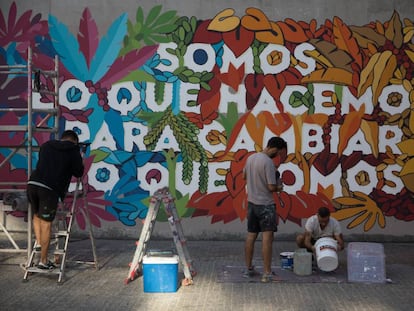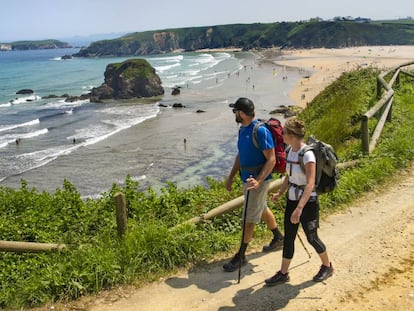Salamanca, Spain’s great university city
Students know it as a place of learning and partying; visitors come for the history, the architecture and the food
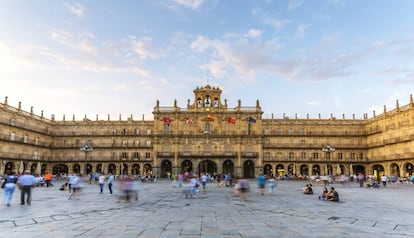
Salamanca is home to Europe’s third-oldest university after Bologna and Oxford. Founded in 1218, it has had illustrious professors among its faculty, including the 16th-century intellectuals Fray Luis de León and Francisco de Vitoria, and the early 20th-century writer and thinker Miguel de Unamuno. De Vitoria, whose writings created the foundation for modern international law, held that Amerindians were not inferior beings, as was commonly held at the time, and that they had the same rights as Europeans, including ownership of their lands. All of which is a source of pride and one more reason to visit the Castilian city.
10am Breakfast among mirrors
Although Salamanca is by no means closed to new ideas, its taste for the classic is what makes it unique. A good place to start the day is Café Novelty, founded in 1905 and located in the city’s unmatched Plaza Mayor, which needs no further introduction. The café still preserves its checkered marble floors, cast-iron columns, wall mirrors and leather sofas. Torrente Ballester, a leading member of the Generation of 1936 literary movement, was once a regular at the literary gatherings that used to take place here.
11am Climbing the stairs
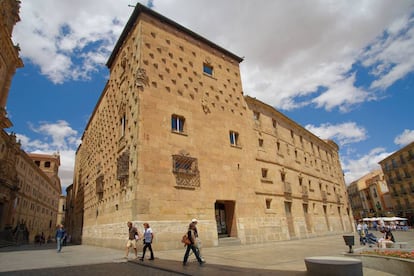
Walking down the pedestrianized Rúa Mayor, I arrive at the landmark 18th-century building of La Clerecía, whose connected towers afford a complete view of the city, its rooftiles and its golden stones. Down below is the famous Casa de las Conchas with its shell-decorated façade, a magnificent 15th-century building that now houses a library.
Now hooked on stairs, I saunter up the towers in both cathedrals, the New and the Old. A group of French visitors are standing outside the old temple, observing the façade known as Puerta de Ramos and oohing and aahing over a funny sculpture of an astronaut and a monkey (or is it a dragon?) put there by restorers in 1992.
After such frivolities, it is time to look for something more serious: the University Rector’s House. The building now houses the House-Museum of Unamuno, where the writer died in 1936 shortly after the “Uncivil War” broke out, to use his own description. There are photographs, furniture, drawings, books, manuscripts and the same vine that Unamuno saw outside his window. The writer’s life is being brought to the big screen by filmmaker Alejandro Amenábar in Mientras dure la guerra, which focuses on Unamuno’s famous public confrontation with the Francoist general Millán-Astray.
2pm Jamón
It is a well-known fact that Salamanca offers many opportunities for great dining, so it is not difficult to find a good place to eat. I choose Don Mauro, a classic restaurant in Plaza Mayor, and make sure to order jamón, whose top quality is a point of pride for Salamanca.
4pm ‘El Lazarillo de Tormes’
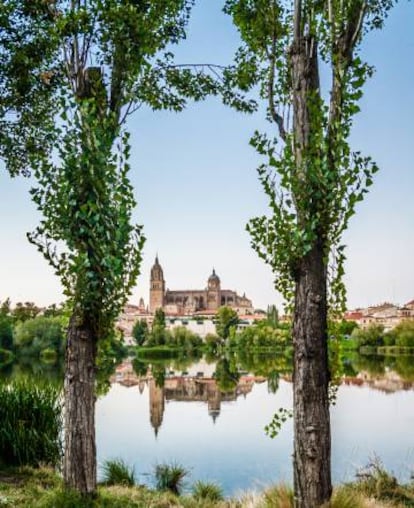
After lunch, I visit another imposing building, the university’s Escuelas Mayores. The classroom known as Aula Fray Luis de León has been preserved the way it was in the 16th century. Emperor Charles V took a lesson from Francisco de Vitoria here, and probably heard him say that law should be above force. There are several other rooms around the central court featuring stone arches, rustic benches and wooden beams on the ceiling. This is where Tomás de Mercado took lessons, then went on to write a treatise on interest rates and their ethical application. His work, which also considered the effects on prices of the new supply of precious metals from the Americas, is considered a precursor of modern economics. Unfortunately, the building’s marvelous library is only visible through a glass door located on the upper cloister.
I walk down toward the Tormes river, with its banks full of unruly vegetation. I take a break inside the pretty little garden known as the Huerto de Calisto y Melibea, named after the characters in a famous book published in 1499 and best known as La Celestina. From here I reach the Roman bridge, where another famous literary character, the blind man in El Lazarillo de Tormes, knocks his pupil’s head against the stone boar. I turn back along the iron bridge of Enrique Estevan in time to catch the magical moment of dusk with its orange hues that wash over everything. There is a gas station at one end of the bridge that sports stone arches. Only in Salamanca…
8.30pm Tapas and a movie in Van Dyck
I decide to go out for tapas at night on Van Dyck street, just like the students do in this university city. The Asador de Van Dyck reminds me of the eateries of my childhood, and I order a tosta topped with a piece of tenderloin and garlic sauce and, perhaps influenced by my Asturian ancestors, I wash it down with cider. Over at El Minutejo, which has a more contemporary look, I sample a tasty pincho moruno, Spain’s version of a kebab, and a tosta with codfish and pepper jam. Then, as I consider a last-minute drink, I walk past the Van Dyck filmhouse, which shows movies in original version, and opt for this instead. As I stand in line, I recall a line by Miguel de Cervantes in his short story The Licentiate Vidriera: “Salamanca, a city that enchains the will of all who have tasted the amenities of life in that fair seat of learning.”
Martín Casariego is the author of ‘Con las suelas al viento.’
English version by Susana Urra.
Tu suscripción se está usando en otro dispositivo
¿Quieres añadir otro usuario a tu suscripción?
Si continúas leyendo en este dispositivo, no se podrá leer en el otro.
FlechaTu suscripción se está usando en otro dispositivo y solo puedes acceder a EL PAÍS desde un dispositivo a la vez.
Si quieres compartir tu cuenta, cambia tu suscripción a la modalidad Premium, así podrás añadir otro usuario. Cada uno accederá con su propia cuenta de email, lo que os permitirá personalizar vuestra experiencia en EL PAÍS.
¿Tienes una suscripción de empresa? Accede aquí para contratar más cuentas.
En el caso de no saber quién está usando tu cuenta, te recomendamos cambiar tu contraseña aquí.
Si decides continuar compartiendo tu cuenta, este mensaje se mostrará en tu dispositivo y en el de la otra persona que está usando tu cuenta de forma indefinida, afectando a tu experiencia de lectura. Puedes consultar aquí los términos y condiciones de la suscripción digital.
More information
Archived In
Últimas noticias
From digital curfews to blocking apps: How technology experts protect their children online
Why the price of coffee has skyrocketed: from Brazilian plantations to specialty coffee houses
Confined to a Cuban hospital: When electricity is a matter of life or death
How Japan is trying to avert ‘digital defeat’
Most viewed
- Pablo Escobar’s hippos: A serious environmental problem, 40 years on
- Reinhard Genzel, Nobel laureate in physics: ‘One-minute videos will never give you the truth’
- Why we lost the habit of sleeping in two segments and how that changed our sense of time
- Charles Dubouloz, mountaineering star, retires at 36 with a farewell tour inspired by Walter Bonatti
- The Florida Keys tourist paradise is besieged by immigration agents: ‘We’ve never seen anything like this’
